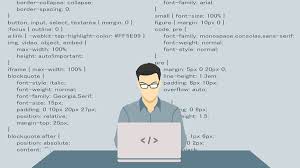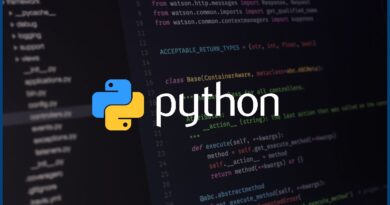10 Coding Languages That Didn’t Match Up to Developers’ Expectations
The top 10 programming languages that haven’t become very popular among developers are listed below.
The benefits of programming languages for developers and current trends have a big impact on their adoption. Programming languages will become more widely used and popular the easier they are for programmers to learn. There have been numerous cases where certain languages fall short of developers’ expectations, even after a major launch. The top ten programming languages that haven’t been more well-liked by developers are listed below.
VBA
VBA is a component of Visual Basic, a legacy programme developed by Microsoft Corporation (NASDAQ: MSFT) to facilitate the writing of Windows operating system programmes. Applications like Access, Excel, PowerPoint, Publisher, Word, and Visio that are part of Microsoft Office (MS Office, Office) use Visual Basic for Applications as their core programming language. The language VBA is outdated. It is outdated, extremely complex, and genuinely incapable of doing several fundamental tasks that other, more potent languages are capable of. It’s so old, in fact, that Microsoft no longer funds its advancement.
Objective-C
With the addition of Smalltalk-style messaging to the C programming language, Objective-C is a general-purpose, object-oriented programming language. For the OS X and iOS operating systems, as well as their corresponding Cocoa and Cocoa Touch APIs, this is the main programming language that Apple uses. Objective C’s retro syntax, sideways superset thinking, and dictatorial tendencies are among the things that turn developers off.
Assembly
The lowest level programming language for a computer or other programmable device that is most similar to machine language is called assembly language. Since assembly language is frequently tailored to a certain computer architecture, there are several varieties. An increasingly used assembly language is called ARM. The requirement for assembly language has been removed by advancements in compiler technology. As machines these days are so rapid, assembly is no longer necessary.
COBOL
The COSADYL Committee established COBOL in 1960. COBOL, which stands for “Common Business-Oriented Language,” was primarily intended for use in corporate settings, as the name would imply. Whether or not COBOL is considered a dead programming language is still up for debate. This is due to the fact that it is still present in many outdated legacy systems that are too costly to replace.
LISP
Programming languages like LISP are about to die. Many explanations, including clumsy syntax with parenthesized prefix notation and its primary usage as a garbage collector, are put out by the developer community. Despite being a flexible and useful language, developers have given it up in favour of other, more widely used languages with comparable features.
Ada
Ada is another largely obsolete programming language that persists in legacy systems, similar to COBOL. It was designed to take the place of the hundreds of languages that the US Department of Defence was using. Ada is still utilised for a small number of projects or functions in addition to several crucial systems, despite its complexity and ambition. It is, however, progressively losing prominence to more contemporary languages.
Perl
For many years, Perl has been on its deathbed and then back again. Perl 6 was developed for 15 years, beginning in 2000, and was eventually released in December 2015. Many mentioned Perl at this time as one of the other dead programming languages that had lost popularity. Although Perl 6 has brought the language back to some degree of popularity, it is still significantly less common than it was.
Ruby
The Ruby programming language was created in 1995 by Yukihiro Matsumoto. Ruby used to be the language that one should learn and utilise. Even while it’s still running strong today, most of its initial appeal has diminished. Because of this, a lot of people think Ruby will continue to deteriorate in the upcoming years. It will eventually make its way onto this list of defunct programming languages.
Haskell
The original goal of Haskell’s development was to create a small language suitable for list processing and symbolic calculations. Despite having a more user-friendly syntax, manageable code, shorter lead times, and increased reliability, its value as a coding language is steadily declining. Given the popularity of modern languages like Go and Python, it might become obsolete in a few years.
R
R is a computer language that is mainly used for statistical data processing. Despite having several advantages over other programming languages, such as Python, its user base has been declining. In just one month, its ranking on the TOIBE index dropped from 9 to 11. It might not go away entirely, but considering how other programming languages are gaining popularity, it will undoubtedly become less significant.



